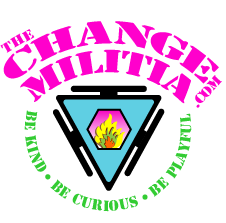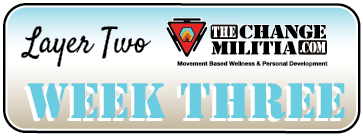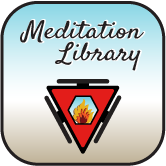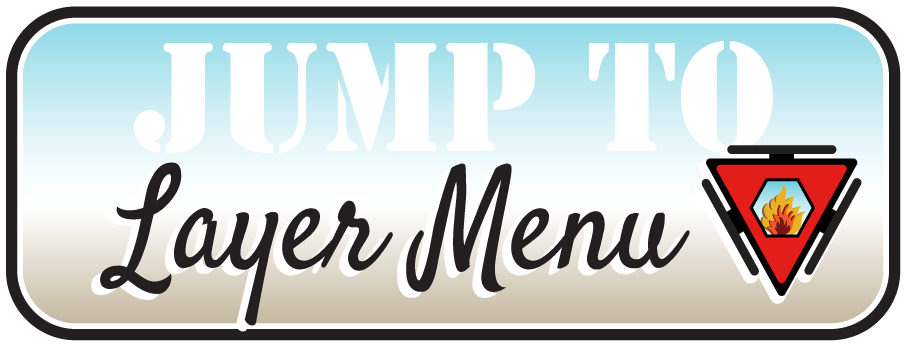
Layer Two, Week Three – Sunday
- Morning – Watch Video and Read Instructions Walking Meditation
- Midday – Watch Video and Read Instructions Sit and Unwind, Level Four
- Evening – Read Week Four Concepts
- Evening – Practice Walking Meditation or Sit and Unwind, Level Four
This week let’s explore the biases, stereotypes, and predispositions that influence you. Let’s start with your grandparents. What did they offer up as truth when you were a kid? What beliefs did they hold that limited their ability to be tolerant and empathetic? How do their beliefs still influence you? What did you co-opt from them without conscious consideration? What did they do that resulted in separation and distancing from others? What did they believe that you still admire?
“The language of God is not English or Latin; the language of God is cellular and molecular.”
Timothy Leary, Harvard Law School Forum (1966)
Let’s talk a bit about the images and beliefs that you hold. Images and beliefs are the foundations of your fears, the silhouettes of your defenses and the basis for all your intolerance, subjectification, and blame.
Images and beliefs are the preferences and judgments that you default to. I don’t like brussel sprouts. The Orioles will never win the World Series. Red-headed bankers smell funny. I’d rather eat dinner at the same time every night. My parents were never there for me. Men even lie in their sleep. Wrinkles on my forehead will ensure that I am attractive. Big dogs scare me. I never fly on Saturday mornings. I am allergic to anything pickled. I have deep psychological issues related to my obsession with orange ducks carrying transparent umbrellas. Everything you believe to be true as a default (without determining its veracity in the moment) creates a bias, preference, and a prejudice. You assume your image of the world is accurate regardless of the facts and actuality. Every belief you have creates an imbalance in your thinking, feeling, and posture.
Images and beliefs generate your demands. Your subconscious mind wants (demands) things to continue to be how they have been. Demands are the rules by which your subconscious mind determines safe/unsafe, good/bad, right/wrong, and want/don’t want. Demands are the walls, floor, and ceilings your mind erects to limit your potential and the possibilities you can identify. Demands necessitate that your energy be funneled toward encouraging one outcome and discouraging all other outcomes.
Demands dictate your behaviors. They are the reactions to your fears. When you divert enough energy to them, demands will trump every intention you hold. When demands become your driving force; they become how you react and who you are.
Your demands become your nature and form the all the limiting aspects of your personality.
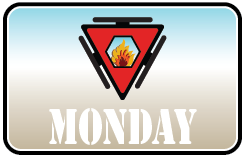
Layer Two, Week Three – Monday
- Morning – Read Monday Concepts
- Morning – Practice Sit and Unwind, Level Four
- Evening – Practice Walking Meditation
Let’s do the same thing as yesterday by considering your parents. If you aren’t familiar with all the different types of biases, check out this link and scan the bullet points. We all have biases and predispositions. Not all of them are bad but all of them limit our ability to discern actuality, possibility, and range. You use your predispositions, stereotypes, and biases to create a comfortable and familiar view of the world. Your subconscious mind uses them to create scenarios it considers safe.
What has worked in the past to reestablish your familiar zone is used again and again. As you become predisposed toward new demands, those new demands breed new ever more limiting patterns of behavior. Your behaviors are then defined by the new, narrower images, and more restrictive beliefs because they are the only things your mind allows you to see as possibilities. What was okay is no longer okay.
Your subconscious mind likes ruts, excuses and quitting. It feeds off fear and drama. It is the overseer of the limiting habits that make up the majority of your personality. Your subconscious mind uses current stimuli to cue scenario generation, predicting threats or benefits. When there are more stimuli than your mind can manage, it begins to look for scenarios that will get you back to what it thinks is a manageable and familiar range. When the present is judged as out of control, a limit your subconscious mind has set, it instigates a cascade of movement to regain control. These movements are your habits, dysfunctions, and personality shortcomings. Your life is a never-ending series of these movements, movements as simple as facial expressions and including most of the aspects of your personality and all the habitual ways you diffuse or bleed energy.
Beliefs are purses for the fears you clutch… sewn into sentences and fictional satchels of truth.
Here is an example that has probably led to the end of every relationship you have ever had. You are in a new relationship and everything is spectacular. Things go along great and gradually you get familiar with each other. The newness wears off and you fall into patterns. You start to notice that some of your partner’s patterns aren’t really that attractive. You judge them and then they increasingly start to annoy, frustrate, and vex you. You shift your image of the person from someone who is wonderful to someone who has some worrisome tendencies. Your belief that he or she is the one is progressively replaced by the idea that he or she might not be the one. Then your subconscious mind starts looking for further confirmation of his or her inadequacy … and you find it. Soon, you wonder what you ever saw in them. And then, it seems like a much better idea to be without them than with them. They haven’t changed; your predisposition has changed because you started looking for what was wrong instead of what was right. Your image changed because your belief changed.
Your mind starts a motion by having a notion, concocting a potion and then … making a drop into an ocean.

Layer Two, Week Two – Tuesday
- Morning – Read Tuesday Concepts
- Morning – Practice Sit and Unwind, Level Four
- Evening – Practice Walking Meditation
Yesterday it was your parents, today consider the limited and prejudicial thinking of your friends, colleagues, and neighbors. What is normal, typical, and prevalent in their thinking, beliefs, and languaging? How does that reduce their ability to be thoughtful, tolerant, happy, kind, and compassionate? How does it create and maintain separation? How does it make them see things as black and white? How does it propagate Us and Them thinking?
Images are the situational bias’ you hold, blinders on what you allow yourself to consider. They are the limited and limiting definitions that you give to words, concepts, things, places, people, and thoughts.
When you picture good breakfast what comes to mind? How about when picturing great relationship?
How has your definition of good breakfast and great relationship changed over time? Think back. Did you believe your previous definitions? Were they your truths? What happened? Were they true? If so, why aren’t they true now?
Your images, limiting definitions, aren’t actual or factual; they are proximal and situational. You create images to predefine what you are going to consider as inside or outside your comfort zone. Predefinition requires predicting future safety parameters, placing a perimeter on potential possibility. Images define what you will value in the future as acceptable, desirable, and beneficial.

Layer Two, Week Two – Wednesday
- Morning – Read Wednesday Concepts
- Morning – Practice Sit and Unwind, Level Four
- Evening – Practice Walking Meditation
Bring it closer to home. How about you? How many of your judgments, prejudices, and intolerances come up without conscious thought? How do those things create distance and reduce opportunity? Your biases, stereotypes, prejudices, and predispositions limit your ability to connect, socialize, and expand your thinking, feeling, and social range. How are you small minded? What truths do you hold onto that create a box that limits your experience of life?
Beliefs are the feeling side of images, the emotional curtains you draw to keep out everything that might dawn outside the windows of your circumscribed and inadmissible horizon.
Most of your beliefs were taught to you. The bricks in your walls: your parents, friends, community, society, and culture, told you what to think and how to be intolerant. Babies are not born racist, nationalistic, homophobic, or with any other fear, intolerance, or hate. Your parents taught you or modeled for you how honest, kind, and generous you should be.
Your demands and habits become the fictional comfort zones you create: the predispositions, fictional biases, of good/bad, right/wrong, should/shouldn’t, can/can’t, will/won’t, wanted/unwanted, and safe/unsafe.

Layer Two, Week Two – Thursday
- Morning – Read Week One Thursday Concepts
- Morning – Practice Sit and Unwind, Level Four
- Evening – Practice Walking Meditation
Let’s look at the energetic results of your biases, stereotypes, prejudices, and predispositions. When you limit your thinking, you limit energy flow. Biases, stereotypes, prejudices, and predispositions are types of resistance. See if you can feel how your limited thinking makes things feel harder. Feel your complaints, judgments, and negativity as drag (as an anchor or weight, and as a tether).
Behaviors are the habitual consequences of your images and beliefs. You are the mouse and your images and beliefs are the walls of the maze. When you limit your options, the limited options are the only ones you see, not the only ones possible. Since the habitual behaviors are all that you see, they become all that you do. Habit becomes personality. Your personality isn’t who you are; it is the result of your images, beliefs, and behaviors.
Personality is the well-trodden path your habitual behaviors walk.
If you believe you are only attracted to blond-haired, grey-eyed, Rubenesque men or women who work in the financial services industries and vacation solely in Slavic countries; you are going to greatly reduce your opportunities for a loving, meaningful relationship. You are going to instantly discount and de-value anyone who doesn’t meet your criteria. And you are going to instantly increase the value of anyone who does.

Layer Two, Week Two – Friday
- Morning – Read Friday Concepts
- Morning – Practice Sit and Unwind, Level Four
- Evening – Practice Walking Meditation
Thursday’s focus asked you to feel the resistance in your biases, predispositions, and limited thinking. What did it feel like? If you could feel it holding you back, what did that feel like? Where could you feel it? There is a quality to all the different types of resistance. When you can identify yours, it will help you to acknowledge, accept, and then reduce the biases you hold.
Images, beliefs, and behaviors are the root of your dysfunctions. They are the illusory excuses you create to limit potential and diffuse your vibrancy. Your dysfunctions all have demands, accompanying agendas, patterns, or components that you use to limit or deflate your vitality.
As you can recognize your demands, you can identify your habits and then distinguish your images, patterns, and beliefs. After DIStinguishing them, you can begin to DISmantle, DISregard and DIScard them. ‘DIS is the key!
When you hang on to your beliefs, images, and patterns of behavior, they become the trap door below the noose.
”Many of us seek peace and by “peace” we ordinarily mean either to be at peace
with ourselves or to reach some state of equilibrium in which we are not overly
affected by life’s trials and tribulations.”
Joel Kramer, The Passionate Mind Revisited (2009)
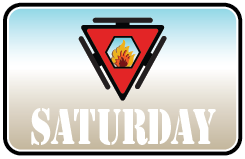
Layer Two, Week Two – Saturday
- Read Week One Saturday Concepts
- Morning – Practice Sit and Unwind, Level Four
- Evening – Practice Walking Meditation
Ask yourself why you have biases. How do they help you? How do they make your life better? How do they help you to be kind, loving, or generous? Some of them might. If you believe people are inherently good, you will be predisposed to confirm that belief. Most of them are limiting. Catch yourself when your biases are creating distance and lowering your ability to be present and empathetic. Biases also reduce opportunities for fun, fulfillment, friendship, and frolic.
When I was a kid, we moved around a lot. I was also a moderate stutterer. When I would get to a new school, I would puff up my chest and walk around quietly, not engaging. I was the new kid and I didn’t want to be messed with. I was shy and afraid and didn’t have the social skills necessary to make friends easily. My image was that I wasn’t safe in unfamiliar territory with people I didn’t know. My pattern was to try to make myself bigger and unapproachable.
The beliefs I held included: not being accepted or acceptable, I was different and therefore bad, I didn’t make friends easily, the other kids already had their social circles and there wasn’t room for me in their group. The most powerful belief was that I was shy and would be rejected for my stuttering. Even though all those things proved to be false every single time, I continued to use them as coping mechanisms for the expanded potential new places and new people brought.
Even today, being gregarious is something that I warm up to. I can see now that having my own business was a way to become the center of my universe. I didn’t have to adjust to new environments, my environments revolved around me. Growing and expanding my business gave me the feeling that I had a larger base of safety. I started my business in an 800-sq. ft. warehouse and ended in a 30,000-sq. ft. building.
Interestingly enough, I never felt safer than after I sold my business, houses, and cars.
Challenge your beliefs, behaviors, and images. Let yourself expand beyond your limited reality. See what else is out there.
The extended meditation of Square Breath, Level Four will map a new frontier for your conscious mind. It will give you a personal experience of conscious mastery. The meditation may require you to make dozens of decisions to continue; to tolerate and to ignore your sub-conscious mind. It can be a shifting of absolute power from your sub-conscious mind to your conscious mind.
Once you have one experience of successfully enduring healthy discomfort, your subconscious mind can no longer get away with telling your conscious mind that things are impossible or pretend that new opportunities are inconceivable.
Every time you challenge your subconscious mind successfully, it gets weaker and your conscious mind gets stronger. Your moment to moment awareness grows and you will react less and less habitually. Beneficial decisions will get easier to see and do.
As you begin to decide what your action is going to be instead of reacting habitually; you will begin to meet your intentions and find levels of happiness and fulfillment that you have never known.
Your movements (physical, mental, emotional, and energetic) will be aligned, balanced, and all on the same trajectory … and then your outer world will begin to entrain. You will choose to grow, to find increased happiness and fulfillment. The components of your world will either get in sync or they will fall away
Sit and Unwind, Layer Two, Level Four
Step 1 – Sit comfortably (Chair, floor, or sofa, but be comfortable. If you are in a chair; don’t rest your elbows on anything, let them hang. Posture is important but secondary to being relaxed.)
Step 2 - Take a Current30 (Spend 30 seconds being aware of your current situation, environment, disposition)
Step 3 – Begin Exhaust/Purge Breathing (Inhale deeply and exhale with mild force. As you inhale, encourage yourself to relax. As you exhale, feel yourself venting tension) Continue for 30 seconds focusing on relaxing your face, neck and shoulders with each compelled exhale.
Step 4 – Sequential Relaxation Level 3 - (Normal but deep breathing) Consciously relax your body as you breathe. Feel your whole body. Relax your emotional body. See if you can feel the weight of the limiting images, assumptions and beliefs you hold. Continue to breathe, continue to relax your physical body and continue to connect to your beliefs and assumptions as a presence, a dark force that holds you back.
Step 5 – Feel your limiting beliefs and begin to contemplate letting go, loosening the reins, opening the top of the box, unlatching the bird cage door or whatever visual that works for you.
Step 6 – Soften your shoulders, take a couple of deep, soul quenching breaths and imagine your world without those limits. Feel for that world. Feel for the ease, tolerance, and intimacy.
Step 7 – Comfort and soothe your old pains, resentments, and criticisms. Allow yourself to feel a future without those limits.
Step 8 – Swim and luxuriate in the feeling, allow it to saturate and pervade all that you are and all that you do.
Why it Matters – The vast majority of what you think, belief, and are aware of is because of your limiting beliefs. They are a filter blocking out the majority of the light and the opportunities and understanding that comes with it. I come from the assumption that everything, every single thing, I believe is incomplete in some way.
Everyday Usability – As you make your way through your day, regularly upwell the feeling of tolerance and possibility into your body and continually radiate that feeling into your environment. Let it pervade and infuse everything you do. As you do, it will induce and awaken the same feeling in everyone you meet. This is one of the other things we mean by Changing the World from the Inside Out!
Progression – This is the last of the Sit and Unwind movements for a while. In Layer Three, the movements will be more robust, awakening, and invigorating.
Walking Meditation – Finding a Moving Center and Gaining Momentum
Step 1 - Do a Current30 focusing on physical sensation..
Step 2 – Begin to walk and feel your weight in your feet and how that weight translates up through your body with every stride.
Step 3 – Identify places of tension, pain or sensations. Soften and relax as you walk. Breathe deeply, exhale forcefully and feel yourself melt into the movement of walking.
Step 4 – Begin to subtly shift your weight from side to side more than normal with every step. Accentuate the energy transfer from side to side. Bend your knees more than normal and lower your hips a few inches
Step 5 – Slowly reduce the amount of shift to and try to hone in on the place where your core stays centered throughout the walking sequence. A visual might be that it would appear from the waist up that you are on a travelator or horizontal escalator
Step 6 – Continue to relax and breathe deeply.
Step 7 - Try walking in this way without moving your arms.
Step 8 – Consciously glide and direct your body to maintain center. Increase your awareness of how you move off center.
Step 9 – Begin to notice how you compensate when you lose focus.
Step 10 – Walk this way varying your speed for as long as your schedule allows. This can be very fatiguing; take a break if you need to.
Step 11 – Feel for your resistance and allow for the possibility that you can allow it to evaporate.
Step 12 – Extra credit for doing this in crowded places while wearing outrageous hats and/or singing show tunes.
Why it Matters – This movement will highlight what your physical center feels like and how challenging it is to maintain. Understanding your physical compensations as you move will allow you to use that experience and translate it to the compensations you employ with your thoughts and emotions.
Everyday Usability – You are most efficient when you move from your center, ask any martial artist, ice skater, or linebacker. Moving from your physical center will increase your health, strength, endurance, flexibility, and fluidity. Moving from your mental center will allow you a wider range of possibility, clearer vision, less distraction, and enhanced creativity. Moving from you emotional center will help you eliminate drama, conflict, and overwhelm.
Progression – This is the last standing/walking meditation for a while. Any time you walk, run, or dance feel for your center. When you laugh, cry, or love, find your center. More than any other direction, center is always the right way to go.
